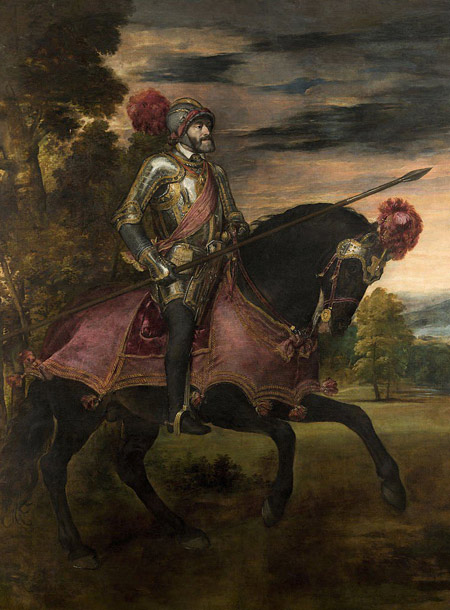
Titian, a towering figure of the Venetian Renaissance, revolutionized art with his colors and expressive brushwork.
Born around 1490, he became the foremost painter of his time, captivating audiences with a diverse range of subjects, from mythological tales to poignant portraits.
His innovative techniques and mastery of light and shadow set the stage for generations of artists to come.
Among his extensive body of work, ten paintings stand out as particularly significant, showcasing not only his artistic evolution but also his ability to convey deep emotion and narrative.
These masterpieces, including “Diana and Actaeon” and “Venus of Urbino,” reflect both his technical prowess and his profound understanding of human experience.
Delving into these iconic works offers a glimpse into the genius of Titian and the lasting impact he left on the world of art.
1. Venus of Urbino
Venus of Urbino, created in 1538, stands as one of Titian’s most celebrated works. It features a nude woman reclining on a bed, captivating viewers with her seductive gaze.
The painting symbolizes conjugal love, highlighted by the small dog representing fidelity and the two maids in the background symbolizing motherhood.
Displayed at the Galleria degli Uffizi in Florence, this masterpiece not only showcases Titian’s artistry but also evokes themes of intimacy and desire.
2. Bacchus and Ariadne

Bacchus and Ariadne, painted between 1522 and 1523, captures a poignant mythological scene. It depicts Ariadne, abandoned on an island by Theseus, as Bacchus, the god of wine, descends in his chariot to rescue her.
Rich in colors and dynamic movement, the painting tells a story of love and salvation. Viewers can admire this masterpiece at the National Gallery in London, where its emotional depth and intricate details continue to enchant audiences.
3. Assumption of the Virgin

“Assumption of the Virgin,” created between 1515 and 1518, showcases Titian’s artistic prowess as it hangs above the high altar in Basilica di Santa Maria Gloriosa dei Frari, Venice.
The painting features the Virgin Mary ascending to heaven, flanked by gesticulating apostles below. Bold colors and dynamic figures break from tradition, capturing viewer attention from afar.
This monumental work is celebrated for its dramatic composition and significant impact on Venetian painting, marking a pivotal shift towards emotional expression.
4. Diana and Actaeon
“Diana and Actaeon,” painted by Titian between 1556 and 1559, showcases a pivotal moment from Ovid’s Metamorphoses.
This masterpiece illustrates the hunter Actaeon, who unexpectedly stumbles upon the goddess Diana while she bathes.
Enraged, Diana transforms Actaeon into a stag, leading to his tragic demise by his own hunting dogs. Currently housed at the National Gallery in London, this painting exemplifies Titian’s mastery of emotional tension and dynamic composition.
5. The Attack of Europa
“The Rape of Europa,” painted by Titian between 1560 and 1562, vividly depicts the mythological abduction of Europa by Zeus, disguised as a bull.
This dramatic scene unfolds over swirling seas, showcasing Titian’s extensive use of dynamic brushwork and rich color palettes.
Housed at the Isabella Stewart Gardner Museum in Boston, this masterpiece exemplifies the tension of the moment, emphasizing both the beauty and peril of mythological narratives.
6. Danaë (Series)
Danaë features prominently in Titian’s work, particularly in the series that includes two notable paintings created between 1553 and 1554.
The first depicts Danaë in bed, fearful of her fate as she learns of a prophecy that her son would kill her lover, the king.
The second portrays a serene and vulnerable Danaë being visited by Zeus, who appears as a golden shower.
Both paintings exemplify Titian’s masterful use of color and texture, evoking deep emotion while remaining a testament to beauty and vulnerability.
7. Diana and Callisto
“Diana and Callisto,” painted by Titian from 1556 to 1559, captures a dramatic moment from Ovid’s Metamorphoses.
The artwork showcases Callisto, a nymph and servant of Diana, revealing her unexpected pregnancy. Titian’s colors and dynamic composition convey intense emotion as Diana discovers Callisto’s secret.
This masterpiece, part of a series commissioned for King Philip II of Spain, can be viewed at the National Gallery in London, illustrating the blend of mythology and human experience through art.
8. Sacred and Profane Love
Sacred and Profane Love, painted by Titian around 1514, illustrates a complex relationship that intertwines sacred and secular themes.
It features a seated bride in white, representing purity, alongside Cupid, the god of love, while Venus, the goddess of beauty, assists hinting at the sacredness of marriage.
This piece, housed at Galleria Borghese in Rome, invites various interpretations, making it a thought-provoking discourse on love’s duality.
9. Pesaro Madonna

Pesaro Madonna, painted between 1519 and 1526, stands as one of Titian’s most significant works. This piece was commissioned by Jacopo Pesaro for the chapel in the Frari Basilica in Venice.
It depicts Jacopo in a devotional pose, kneeling before the Virgin Mary, as Saint Peter presents him. Housed at Santa Maria Gloriosa dei Frari, this artwork showcases Titian’s masterful blend of allegory and emotion, influencing future artists.
10. Equestrian Portrait of Charles V

Titian’s “Equestrian Portrait of Charles V,” painted between 1548 and 1549, commemorates the Holy Roman Emperor’s victory at the Battle of Mühlberg.
The artwork showcases Charles V in a majestic pose on horseback, clad in gleaming armor. This masterpiece blends realism and a dramatic landscape, reflecting Titian’s evolving style during the Renaissance.
It stands at the Kunsthistorisches Museum in Vienna, where it continues to captivate viewers with its bold colors and dynamic composition.






